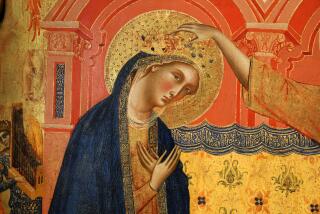Venetian painters’ secret: glass
- Share via
How did paintings by Tintoretto and other Venetian Renaissance artists get their special glow?
Using an electron microscope, Barbara Berrie, senior conservation scientist at the National Gallery of Art in Washington, discovered one of their secrets: tiny bits of glass the artists mixed with their pigments.
“By looking beyond the limits of their usual practice and transforming materials from other trades to their painting, the great artists of the Renaissance created a palette that gave them an immediate and lasting reputation as brilliant colorists,” Berrie said.
It was long thought that Venetian painters, glassmakers and ceramic designers each had his own way of concocting paints and dyes, probably getting the ingredients through apothecaries, as in most of Europe. But Louisa Matthew, head of the Visual Arts Departments at Union College in Schenectady, N.Y., found evidence that Venice developed a special market for dyes and pigments a century before other European areas did.
The possibility that artists were frequenting the same shop as people from other trades, who might have shared both ideas and materials, led to Berrie’s examination of paint samples under an electronic microscope. She discovered rounded bits of powdered glass, only thousandths of an inch thick, in two paintings by Lorenzo Lotto -- one in a red gown worn by St. Catherine, another in an orange-red coat worn by Joseph in a Nativity scene.
Glass was also discovered in a yellow pigment used in a Tintoretto painting of Jesus at the Sea of Galilee.
More to Read
The biggest entertainment stories
Get our big stories about Hollywood, film, television, music, arts, culture and more right in your inbox as soon as they publish.
You may occasionally receive promotional content from the Los Angeles Times.









